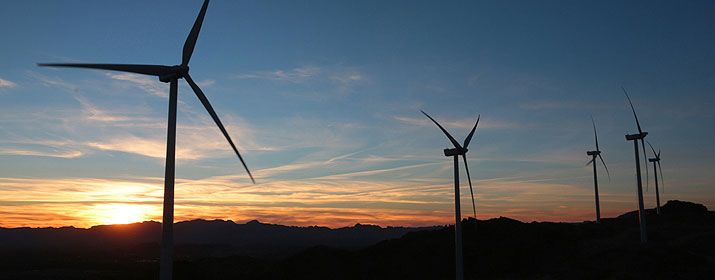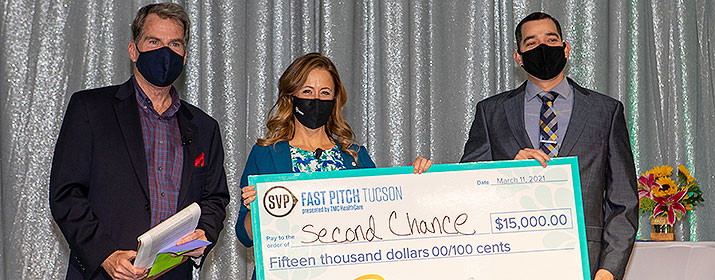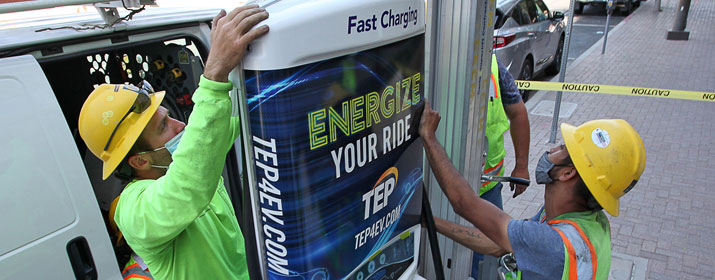When Shannon Breslin hikes with her family, they all bring gloves and tools to pull buffelgrass and other invasive plants that threaten saguaros and other desert plants.
For almost 15 years, Breslin, Manager of Land Resources and Surveying, has worked throughout the community, along with TEP coworkers, to protect our desert. In January, she led the latest TEP volunteer effort to pull buffelgrass in Sabino Canyon as part of the Save Our Saguaros effort during Beat Back Buffelgrass Month.
TEP’s support for buffelgrass control and biodiversity conservation help us promote environmental stewardship, one of the focus areas for our philanthropy. We also support of the Arizona-Sonora Desert Museum and other environmental causes.
This season, the museum is organizing a series of volunteer pulls and other education efforts for its Beat Back Buffelgrass Month promotion, which runs from Feb. 5 through March 4. The final week coincides with National Invasive Species Awareness Week.
TEP helped kick off the month with a volunteer activity in Sabino Canyon in conjunction with the Santa Catalina Ranger District of the Coronado National Forest. At the Jan. 29 event, 18 volunteers filled 30 large trash bags with buffelgrass.
Buffelgrass is a perennial grass from Africa that was brought to Arizona in the 1930s for erosion control, but it began expanding rapidly in the 1980s. Buffelgrass, along with other invasive plants, threatens to permanently change the Sonoran Desert into a fire-prone grassland by providing fuel for wildfires that can kill saguaros and other desert plants and wildlife.
The threat of buffelgrass became more visible during the 2020 Bighorn Fire in the Santa Catalina Mountains when there were reports of saguaros exploding into flames, possibly fueled by buffelgrass in lower elevations around Tucson. See an Arizona Daily Star story in June 2020.
Kim Franklin, the Desert Museum’s Conservation Science Manager, said the Bighorn Fire could have easily spread into the large stands of buffelgrass adjacent to the Catalina Foothills. Previously, the desert has served as a firebreak between the higher elevation grassland and forest ecosystems – where fire is a natural part of the ecosystem – and the city of Tucson, where fire threatens people and property.
“These invasive grasses have been filling in the desert, creating a connection from ecosystems at higher elevation and the city,” Franklin said. “Because of winds, the work of the fire crews, on the ground and in the air, the fire was prevented from going down lower. We were lucky that it didn’t move into the buffelgrass infestations in the desert.”
Buffelgrass isn’t the only problem. Additional invasive plants include fountain grass, which is choking canyons and washes in the Santa Catalinas, and stinknet, which has become prevalent in Maricopa County, Franklin said.
Breslin said buffelgrass also creates a fire risk that can threaten utility lines.
As part of her advocacy, Breslin has served on boards for the former Southern Arizona Buffelgrass Coordination Center, Friends of Saguaro National Park and Sky Island Alliance. With colleagues, she has helped organize pulls and other volunteer efforts through TEP.
“What I like about working on buffelgrass is that it brings people together to protect a common interest,” Breslin said. The “iconic” saguaro is not only emblematic of the desert Southwest, she said, but also a vital economic driver for tourism.
During the month, the museum encourages residents to join community pulls, organize their own efforts or map buffelgrass around their homes, work or recreation areas as part of an effort to better understand the distribution of buffelgrass through the region. Find information about efforts on buffelgrass.org. About 1,000 people usually help during the month, Franklin said.
“We love organizations, like TEP, that send folks to help us with this effort,” Franklin said. “The fact that TEP has such a huge reach is really helpful. We are not going to be successful without public support – and we’re not going to have public support if people aren’t aware of the problem.”
This story is part of our ongoing series highlighting TEP’s philanthropic focus areas, including environmental stewardship. TEP works with nonprofit partners to develop invitation-based donation requests for community assistance efforts. Funds come from corporate resources, not customers’ rates. Learn more about donations.






